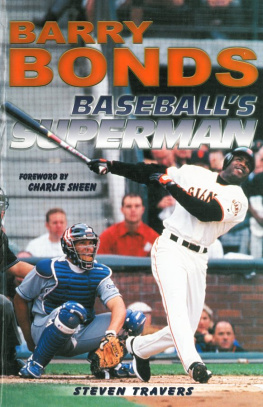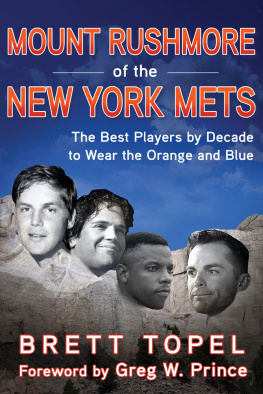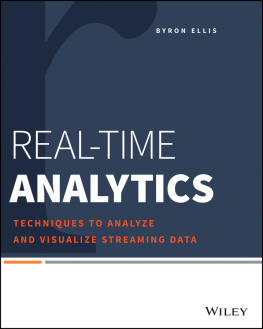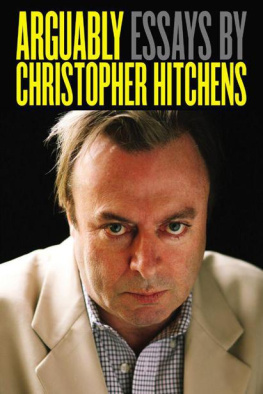The Last Icon
The Last Icon
Tom Seaver and His Times
Steven Travers
TAYLOR TRADE PUBLISHING
Lanham New York Boulder Toronto Plymouth, UK
Published by Taylor Trade Publishing
An imprint of The Rowman & Littlefield Publishing Group, Inc.
4501 Forbes Boulevard, Suite 200, Lanham, Maryland 20706
http://www.rlpgtrade.com
Estover Road, Plymouth PL6 7PY, United Kingdom
Distributed by National Book Network
Copyright 2011 by Steven Travers
All rights reserved . No part of this book may be reproduced in any form or by any electronic or mechanical means, including information storage and retrieval systems, without written permission from the publisher, except by a reviewer who may quote passages in a review.
British Library Cataloguing in Publication Information Available
Library of Congress Cataloging-in-Publication Data
Travers, Steven.
The last icon : Tom Seaver and his times / Steven Travers.
p. cm.
Includes bibliographical references and index.
ISBN 978-1-58979-660-7 (hardback) -- ISBN 978-1-58979-661-4 (electronic)
1. Seaver, Tom, 1944- 2. Baseball players--United States--Biography.
I. Title.
GV865.S4T73 2011
796.357092dc22
2011016699
 The paper used in this publication meets the minimum requirements of American National Standard for Information SciencesPermanence of Paper for Printed Library Materials, ANSI/NISO Z39.48-1992.
The paper used in this publication meets the minimum requirements of American National Standard for Information SciencesPermanence of Paper for Printed Library Materials, ANSI/NISO Z39.48-1992.
Printed in the United States of America
To the memories of Bud Furillo and Rod Dedeaux
Acknowledgments
Thank you to my friend Rick Rinehart at Rowman & Little- field; to Flannery Scott, Alden Perkins, and Patricia MacDonald at Taylor Trade Publishing; to my agent, Ian Kleinert of Objective Entertainment in New York City; to John Horne and the Baseball Hall of Fame; to Matt Merola; to Bud Harrelson and Tom Seaver.
STEVEN R. TRAVERS
USCSTEVE1@aol.com
redroom.com/member/STWRITES
(415) 455-5971
The Baseball Capital of the World: 19441964
He was the 24-year-old reincarnation of Christy Mathew- son, Hobey Baker and Jack Armstrong according to sportswriter Ray Robinson. He was so good blind people [came] out to hear him pitch, said Reggie Jackson. He was, wrote legendary Los Angeles Times sports columnist Jim Murray, too good to be true, except that he was.
At the height of his fame he elicited media verbiage surpassing any previous sports star. He was the primary, dominant figure in a story generally accepted to be the greatest in athletic history, so impossible it is still viewed as much an act of God as an earthly event. He was like a U.S. Senator who also happened to be the best pitcher in the world, a statue come to life.
He came to the toughest, most hard-core city in the world, where the greatest of the great set standards impossible to attain. He matched them, entering the pantheon reserved for a precious few that include Babe Ruth and Lou Gehrig; Joe DiMaggio and Mickey Mantle; Jackie Robinson and Willie Mays; Frank Gifford and Joe Namath. In a year in which American heroes bestrode Manhattans concrete canyons in ticker-tape splendor, he engendered the greatest adoration.
He represented greatness and excellence during the waning days of innocence, before Watergate, free agency, and steroids. In his prime he was the best pitcher in baseball, and arguably the best either of all time or in the postWorld War II time span, depending upon how one analyzes the records and eras. He enjoyed several of the most spectacular single seasons in history and sustained a career built on consistent success over a long period. He transcends sports and New York City.
In a rough n tumble town, a town of Irish Catholics, of rough-hewn neighborhood Italians, of Brooklyn Jews and Harlem blacks, he was a Park Avenue, or to be precise, a Connecticut WASP, yet somehow he was also this fresh-faced Californian who remains the only Mets player to be selected among that rarest of the New York pantheonin many ways really, the last icon.
He was born George Thomas Seaver on November 17, 1944, in Fresno, California. He went by the name Tom, except from his wife, Nancy, who called him George. Charles Seaver, Toms father, played football and basketball at Stanford University. He was also one of the finest golfers in the world at one time. In 1932 he competed for the United States in the prestigious Walker Cup, an amateur trophy named for the family of two presidents: George W. Bush and his father, George Herbert Walker Bush. Famed radio broadcaster Ted Husing announced Seaver defeating his British opponent, Eric Fiddian, thus securing for the U.S. their seventh Walker Cup title. Seaver also competed in the 1934 Los Angeles Open.
After winning the Walker Cup, Charles returned to Stanford and defeated a golf teammate named Lawson Little. When courting his wife, Betty Lee (a former high school basketball player), their dates more often than not were putting contests for nickels and dimes. Two good athletes and good genetics.
Ive got my mothers hands and fingers and my fathers legs and butt, Tom explained.
After graduation came marriage; membership in the aptly named Sunnyside Country Club in Fresno, California; and a rising executive career with the Bonner Packing Company.
This was the central California of John Steinbecks novels, but Charles Seaver was a successful businessman who protected his young family from the Great Depression. Fresno and environs were Americas fruit basket or salad bowl, providing grapes, figs, peaches, oranges, and vegetables to fruit stands and grocery stores.
Charles raised a family in idyllic California suburbia. Fresno is a town that gets very hot in the summer and is subject to strange tule fogs in the winter. Despite being in California, it is a place with a passion for sports that more resembles Texas or Oklahoma. Of those sports, baseball is king. When Tom was growing up, it could be argued that Fresno was the baseball capital of the world. It may still be.
The family backyard included cherry, orange, and fig trees. The streets were safe for the kids to ride bikes and get into mischief. The Little League fields were well kept, supported by an enthusiastic community. Charles kept up his golf game, winning the Fresno city tournament six times. Weekends were spent at the country club. Charles and his wife watched their four children splash in the pool, play golf, and whack tennis balls.
The kids included Charles Jr., who took to golf like his old man. Next was Katie, a swimmer in the manner of her aunt, who had surfed Hawaiis wild rides. Carol was also a swimmer.
There was good clean competition in our home, and you earned what you got, said Charles. The only thing provided for you was emotional security.
George Thomas was the youngest. The Battle of the Bulge was about to get under way when he was born in the late fall of 1944. Victory in Europe came less than six months later; the conquering of Japan a few months after that. He would grow up in a postwar Baby Boomer environment that has been mythologized by such books as David Halberstams The Fifties : California barbecuing, drinks on the patio, socializing with neighbors, the kids fast friends. Capitalism had not just survived, it had thrived. The Great Depression, the New Deal; done, dead. These were the Dwight Eisenhower years, and this was the middle class, the American dream. But in this West Coast version of the Kennedys, being youngest meant fighting for everything you got.
When you are the fourth child in a family, you probably have to be a little tougher to survive, his mother told friends.
His dad was Toms idol, Charles Jr. said. Our father was a perfectionist and he taught his boys to be the same way.











 The paper used in this publication meets the minimum requirements of American National Standard for Information SciencesPermanence of Paper for Printed Library Materials, ANSI/NISO Z39.48-1992.
The paper used in this publication meets the minimum requirements of American National Standard for Information SciencesPermanence of Paper for Printed Library Materials, ANSI/NISO Z39.48-1992.